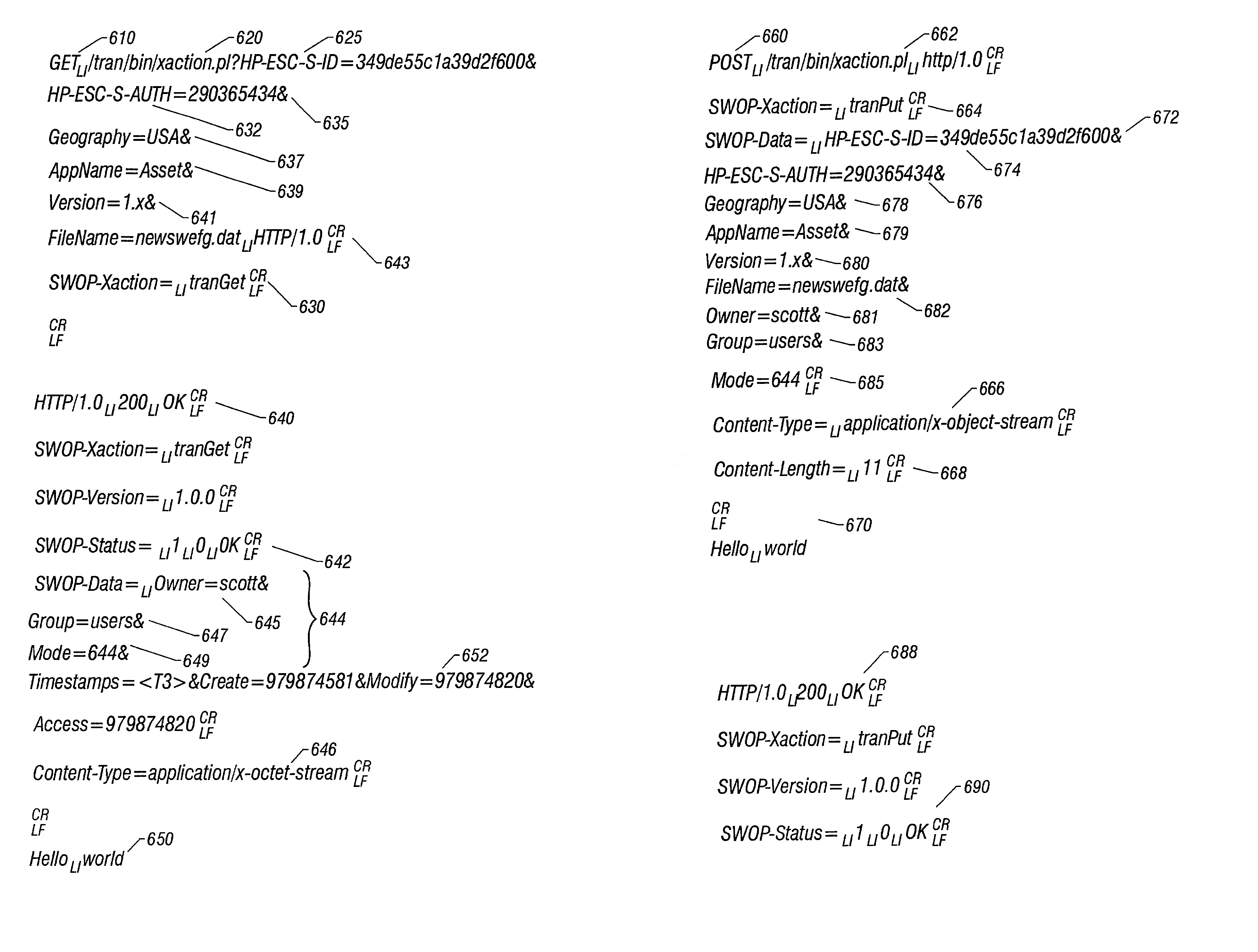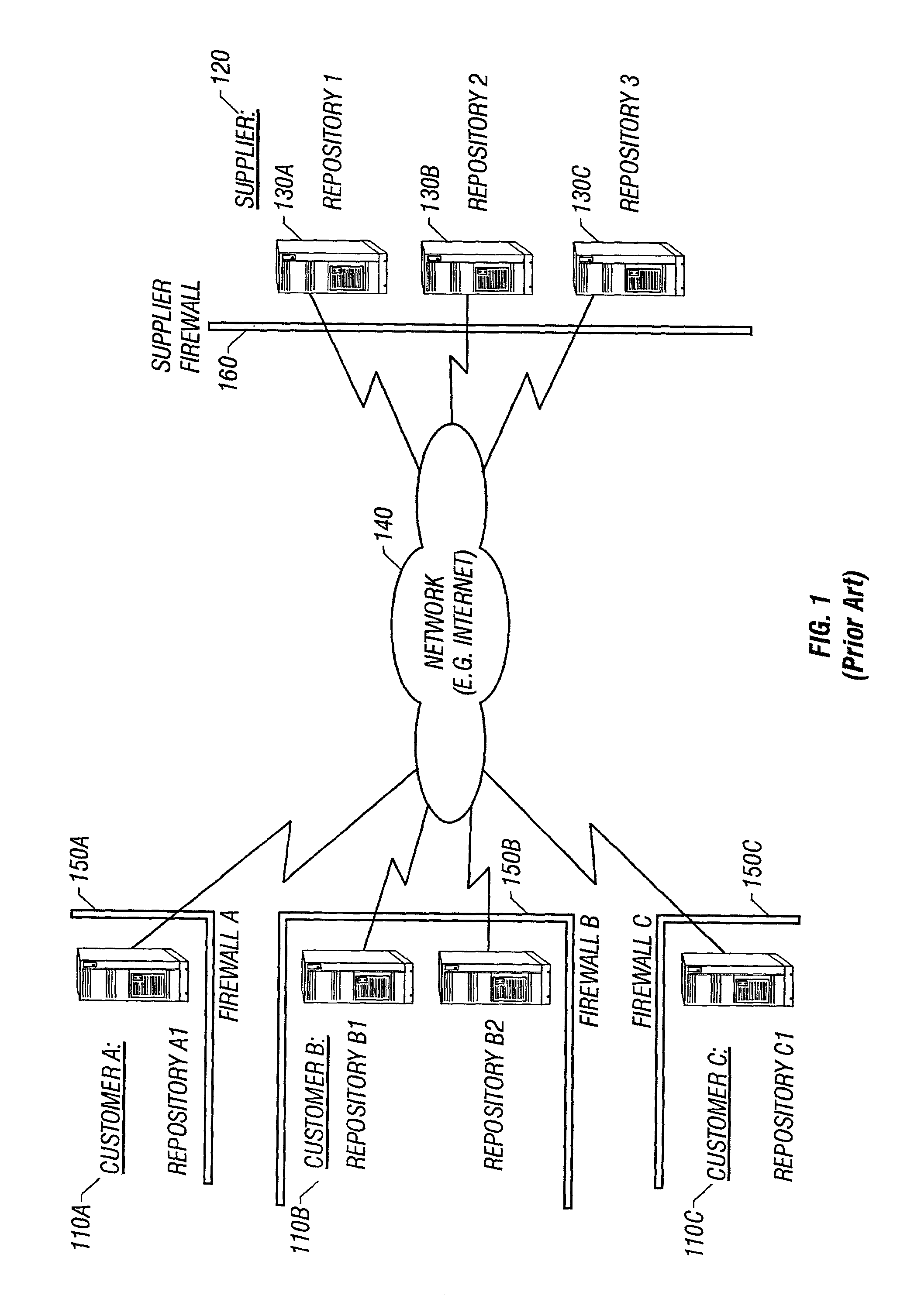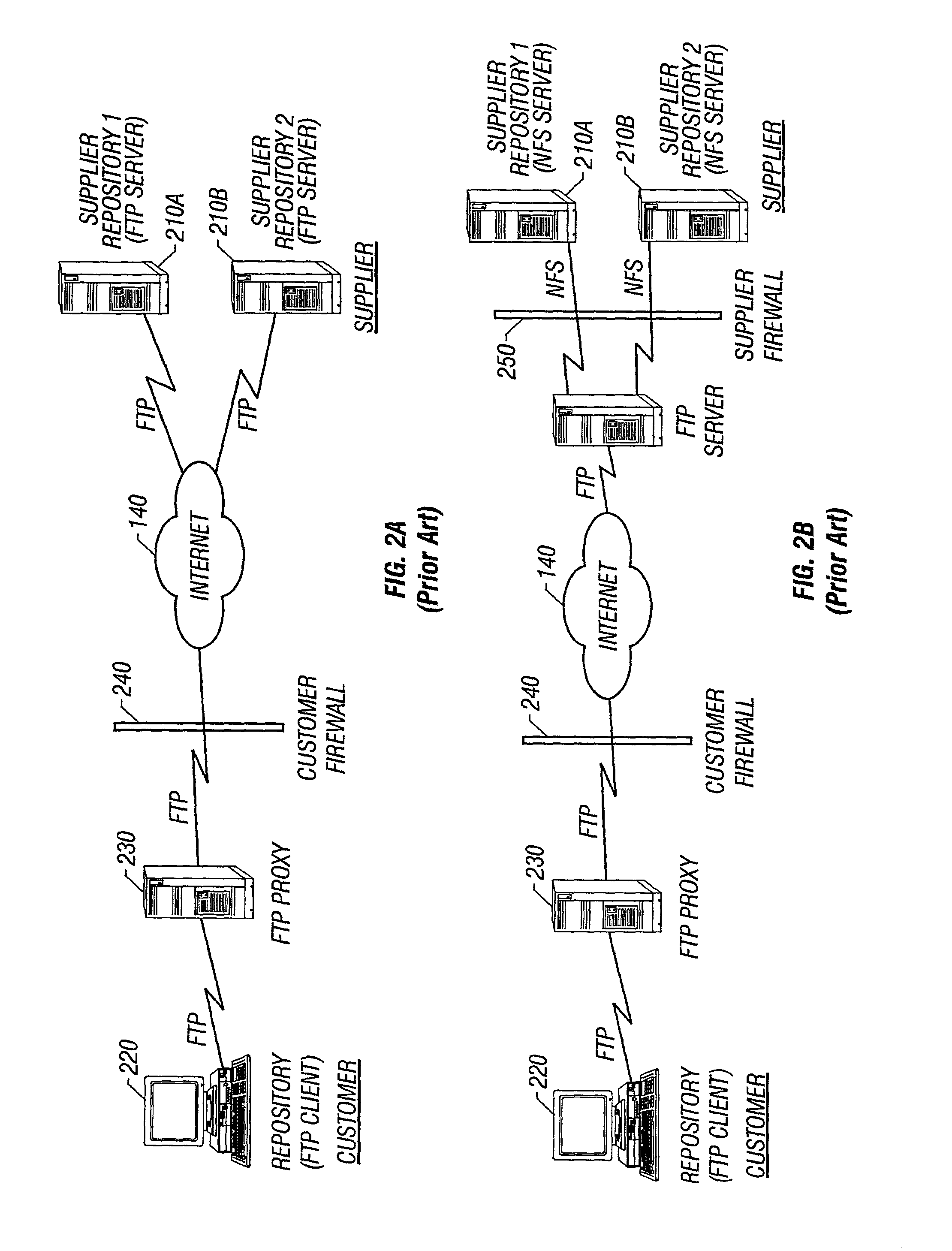Secure routable file upload/download across the internet
a secure, routable technology, applied in the field of computer networks, can solve the problems of ftp architecture, numerous problems in ftp proxy utilization, and the inability to address all of the specific problems described above regarding the supplier/customer problem, and achieve the effect of addressing the specific problems of the supplier/customer problem, reducing the utilization rate of ftp proxy for ftp client/server communication across firewalls, and increasing the number of problems
- Summary
- Abstract
- Description
- Claims
- Application Information
AI Technical Summary
Problems solved by technology
Method used
Image
Examples
Embodiment Construction
[0056]The system and method of the present invention provide an improved HTTP-based architecture for uploading and downloading files between distributed, segregated Supplier and Customer Repositories, across a global-area computer network (e.g., the Internet). As a result, the above-discussed limitations of prior art solutions for the Supplier / Customer Problem are overcome.
[0057]FIG. 5A is a diagram illustrating computer system 500 for uploading and downloading files between Supplier and Customer Repositories, in accordance with some embodiments of the invention. Computer system 500 includes a Customer Repository client computer 510 connected to a global-area computer network 530 (e.g., the Internet), optionally via a Customer Proxy 515 and the Customer Firewall 520. A Supplier Transport Gateway 540, also connected to global-area computer network 530, in turn is connected to one or more Supplier Repository server computers 570n (where n=A, B, C, . . . ), optionally via the Supplier ...
PUM
 Login to View More
Login to View More Abstract
Description
Claims
Application Information
 Login to View More
Login to View More - R&D
- Intellectual Property
- Life Sciences
- Materials
- Tech Scout
- Unparalleled Data Quality
- Higher Quality Content
- 60% Fewer Hallucinations
Browse by: Latest US Patents, China's latest patents, Technical Efficacy Thesaurus, Application Domain, Technology Topic, Popular Technical Reports.
© 2025 PatSnap. All rights reserved.Legal|Privacy policy|Modern Slavery Act Transparency Statement|Sitemap|About US| Contact US: help@patsnap.com



